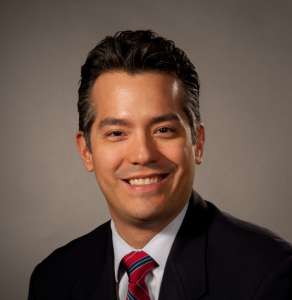 Lipoma Treatment
Lipoma Treatment
If you are concerned about a soft lump or swelling that you have had for a long time, it is possible that you are experiencing the development of a lipoma. A lipoma is a soft, beneath the skin, fatty lump that is slow growing. It has a doughy feeling to it and rarely causes any pain or tenderness except when it pushes on nearby anatomic structures and nerves. Because it is not typically attached to skin or muscle, a lipoma is able to move around when finger pressure is applied (mobile). It is not cancerous, but occasionally its rapid growth can be disfiguring or cause discomfort, sending a person to seek a clear diagnosis and lipoma treatment. Dr. Bastidas evaluates and provides lipoma treatment, assuring the delivery of safe, high quality health care to his patients.
Lipomas commonly occur on the neck, shoulders, back, abdomen, arms and thighs. A lipoma can also develop in a muscle or organ, or deep within the thigh, shoulder or calf. Typically they are less than 2 inches in diameter, but they can increase in size significantly. Some patients tend to develop more than one lipoma. Lipomas present in the forehead can be visually disfiguring. Interestingly, most forehead lipomas are deep to the muscle layer, and a small lipoma can produce a significant visual bump. Lipoma treatment should be considered when growth causes pressure on adjacent nerves and structures and/or becomes uncomfortable. Lipoma treatment is also considered based upon the larger size of the lipoma or the depth of its location. While a lipoma is rarely of serious medical concern, any lump or swelling should always be medically evaluated and Dr. Bastidas is available to assist with that evaluation. While the cause of lipomas is unknown, there is a tendency to run in families, this resulting in a suspicion that there is a genetic factor involved in the development of a lipoma. Most lipomas are developed by middle-aged adults, rarely by children. Lipomas can often be diagnosed by physical exam and ultrasound, however a biopsy is required to know 100%
If a lipoma becomes bothersome relative to its location, or continues to grow, most patients seek treatment. Lipoma treatment by Dr. Bastidas involves a simple excision and sending the material for biopsy. Dr. Bastidas can remove most lipomas in the office under local anesthesia with minimal downtime or discomfort to you. Lipoma excisions are more often covered by insurance and considered medically necessary. There may be some temporary bruising related to lipoma location and its size. Recurrence after the excision of a lipoma is uncommon if fully removed. Relief from the discomfort of a lipoma as its pressure to nearby nerves causes nerve pain makes a strong case for lipoma treatment through excision. When ignored for several years, lipomas can grow to substantial sizes and stretch the normal skin out.
Dr. Bastidas and his team recognize that to the patient, no surgery is insignificant. The staff will do their best to schedule you as promptly as possible and when you visit Dr. Bastidas' office you will be given all the information you need to understand your lipoma treatment, post-incision care and follow-up, when needed, with Dr. Bastidas. Visit our websites at www.DrBastidas.com and www.ippcs.org and learn more about Dr. Bastidas, his background and his plastic surgery protocols for adults and children. Lipoma treatment by Dr. Bastidas places you in talented hands with a team of professionals caring for you.